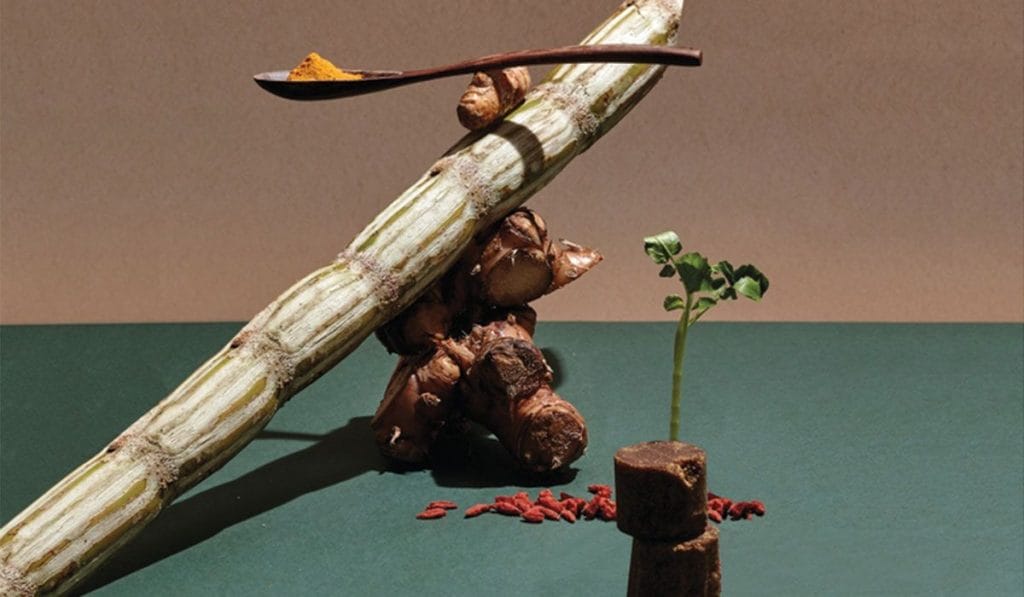Wolfberry, turmeric, and five-spice powder are some ingredients integral to Asian cuisine. Beyond finding pride of place in hawker fare, these potent flavour augmenters are making their way onto the plates of Modern Asian restaurants. Here’s what we found.
01: TURMERIC
Widely used in Malay and Indian cuisines to add colour and a slight bitterness, the herb has since found its way into contemporary cuisines. At fine-dining stalwart Saint Pierre, turmeric powder is prepared as a spicy foam to dress the restaurant’s signature dish of purple artichoke stuffed with zucchini and pine nuts.
02: SUGARCANE
As part of his zero- waste philosophy, Bistro November chef John-Paul Fiechtner transforms sugarcane pulp into flour for his distinct blend of contemporary European and Australian cuisine. In the latest interpretation of his signature frog liver dish, sugarcane flour is made into a tart shell before frog liver parfait is piped into it.
03: GALANGAL
Also known as blue ginger, the rhizome is a staple in Peranakan and Malay dishes for its heat and minty aroma. At Asian-fusion restaurant Morsels, galangal-infused rock melon is made into a puree for a fish dish featuring olive tapenade and Chinese mustard. The restaurant’s summer menu also features a galangal and ginger flower sauce with raw oysters.
04: WATERCRESS AND WOLFBERRIES
Commonly associated with a bowl of comforting, double- boiled soup, this herb and vegetable combination takes on a European slant at Open Door Policy. Watercress is blended with onions, potatoes and vegetable stock to form a velvety green broth served over a sous-vide egg. The dish is finished with wolfberries for a pop of sweetness.
05: FIVE-SPICE POWDER AND GULA MELAKA
There’s something seductive about putting sweet and savoury flavours together. Cheek by Jowl gives the classic French duck leg confit an Asian twist with a five-spice caramel sauce. The dressing is made with gula melaka, Chinese five-spice powder, chicken-seasoned salt and lime juice.
PHOTOGRAPHY VERNON WONG
ART DIRECTION JEAN YAP


